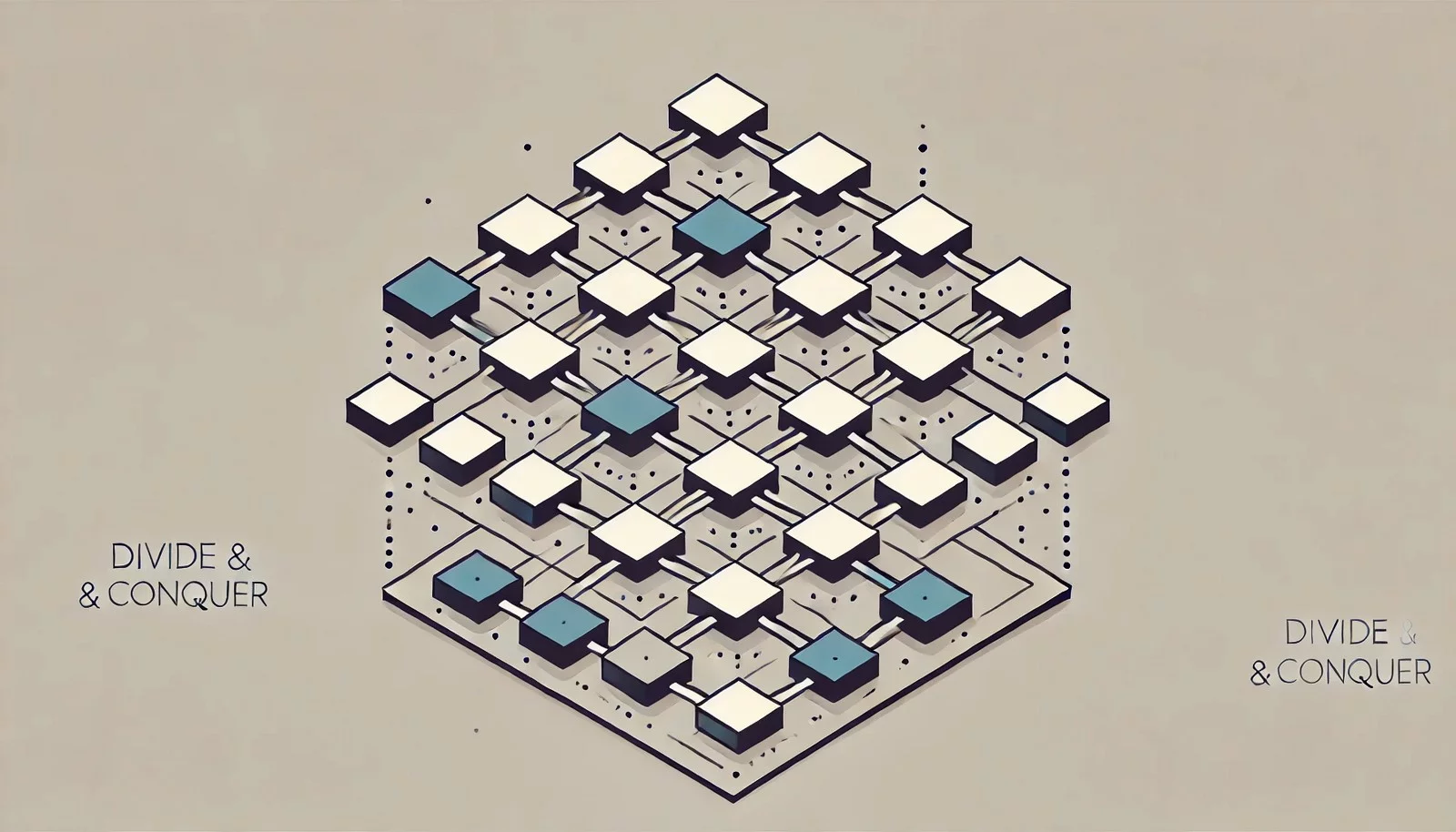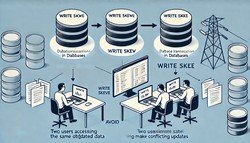Divide and Conquer Algorithm
 (Representational Image | Source: Dall-E)
(Representational Image | Source: Dall-E)
Quick Navigation:
- Divide and Conquer Algorithm Definition
- Divide and Conquer Algorithm Explained Easy
- Divide and Conquer Algorithm Origin
- Divide and Conquer Algorithm Etymology
- Divide and Conquer Algorithm Usage Trends
- Divide and Conquer Algorithm Usage
- Divide and Conquer Algorithm Examples in Context
- Divide and Conquer Algorithm FAQ
- Divide and Conquer Algorithm Related Words
Divide and Conquer Algorithm Definition
A Divide and Conquer Algorithm is a problem-solving approach that breaks a problem into smaller sub-problems, solves each sub-problem recursively, and then combines their solutions to solve the original problem. This technique is widely used in sorting algorithms like Merge Sort and Quick Sort, as well as in computational problems such as matrix multiplication and the closest pair of points.
Divide and Conquer Algorithm Explained Easy
Imagine you want to cut a large pizza into equal slices. Instead of cutting it all at once, you can cut it into two halves, then cut each half into quarters, and so on. This makes the task easier. Similarly, Divide and Conquer solves big problems by breaking them into smaller, manageable parts and solving each one step by step.
Divide and Conquer Algorithm Origin
The concept of Divide and Conquer dates back to ancient times, used in military strategy and later applied in mathematics and computing. In computer science, it became prominent with the development of efficient sorting and searching algorithms.
Divide and Conquer Algorithm Etymology
The term “divide and conquer” is derived from the Latin phrase "divide et impera," meaning "divide and rule," often associated with military and political strategies.
Divide and Conquer Algorithm Usage Trends
Divide and Conquer algorithms have gained significant attention due to their efficiency in solving complex computational problems. In the age of big data, these algorithms are crucial in fields like data processing, machine learning, and network optimization.
Divide and Conquer Algorithm Usage
- Formal/Technical Tagging:
- Algorithm Design
- Computational Complexity
- Data Structures - Typical Collocations:
- "divide and conquer strategy"
- "recursive divide and conquer"
- "divide and conquer algorithm for sorting"
Divide and Conquer Algorithm Examples in Context
- Merge Sort uses Divide and Conquer to sort large datasets efficiently by breaking them into smaller arrays.
- In image processing, Divide and Conquer helps analyze large images by dividing them into smaller sections.
- The Fast Fourier Transform (FFT) is a Divide and Conquer algorithm used for signal processing.
Divide and Conquer Algorithm FAQ
- What is a Divide and Conquer Algorithm?
It is a problem-solving technique that divides a problem into smaller sub-problems, solves them recursively, and then combines the solutions. - What are examples of Divide and Conquer Algorithms?
Examples include Merge Sort, Quick Sort, and the Fast Fourier Transform. - How does Merge Sort use Divide and Conquer?
Merge Sort divides an array into halves, recursively sorts each half, and merges the sorted halves. - Why is Divide and Conquer efficient?
It reduces the complexity of problems by breaking them into smaller, easier-to-solve parts. - What is the difference between Divide and Conquer and Dynamic Programming?
Divide and Conquer solves sub-problems independently, while Dynamic Programming reuses solutions to overlapping sub-problems. - What are real-world applications of Divide and Conquer?
Applications include data sorting, network optimization, and image processing. - How does Quick Sort apply Divide and Conquer?
Quick Sort partitions an array, recursively sorts the partitions, and combines them for the final sorted array. - Can Divide and Conquer be applied to parallel computing?
Yes, it’s a popular approach in parallel computing to divide tasks among multiple processors. - Is Divide and Conquer used in AI?
Yes, it’s used in search algorithms and optimization problems. - What is the time complexity of Divide and Conquer Algorithms?
The time complexity varies based on the problem but is often expressed in terms of logarithmic or linear-logarithmic growth.
Divide and Conquer Algorithm Related Words
- Categories/Topics:
- Algorithm Design
- Computational Theory
- Data Analysis
Did you know?
Divide and Conquer algorithms are foundational in modern computing, forming the backbone of efficient sorting and searching in databases and enabling real-time data processing in large systems.
Authors | Arjun Vishnu | @ArjunAndVishnu

PicDictionary.com is an online dictionary in pictures. If you have questions or suggestions, please reach out to us on WhatsApp or Twitter.
I am Vishnu. I like AI, Linux, Single Board Computers, and Cloud Computing. I create the web & video content, and I also write for popular websites.
My younger brother, Arjun handles image & video editing. Together, we run a YouTube Channel that's focused on reviewing gadgets and explaining technology.
















Comments (0)
Comments powered by CComment